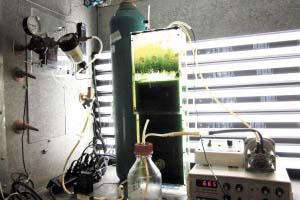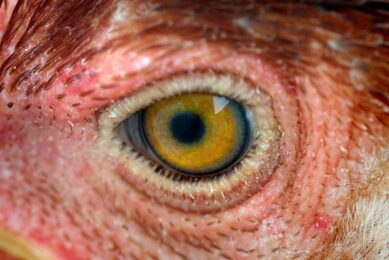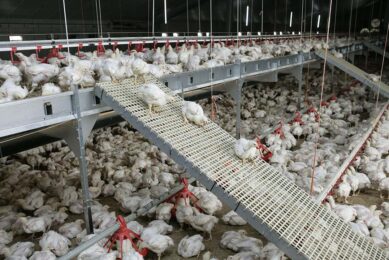Study: Converting poultry generated ammonia into algae

Algae could become an important partner in the future of poultry operations through a project conducted by Iowa State University (ISU) researchers.
Poultry manure generates ammonia, which Hongwei Xin, professor of agricultural and biosystems engineering, said presents a challenge concerning the health and safety of the animals and workers.
If ammonia gets into the atmosphere, the gas could fall back to the ecosystem in the form of acid rain, which could cause algae outgrowth in ponds and lakes, a problem known as eutrophication.
In order to limit the ammonia released from poultry operations and prevent algae growth in unwanted areas, a project team worked together to design and develop a bioreactor that will filter ammonia out of the exhaust air in poultry houses while utilising the gas to grow algae into a useful product in a controlled environment.
“We want to improve the environmental stewardship of the poultry operation,” Xin said. “It would be a perfect match if we could remove ammonia from the exhaust air in poultry houses and use it to grow algae.”
The cultivated algae could provide a source of biomass for biofuel production, as well as an additive for animal feed. Juhyon Kang, graduate research assistant in food science and human nutrition said an algal bioreactor is also beneficial for the environment because it filters potentially harmful gases, such as ammonia and carbon dioxide from air exhaust exiting the poultry houses.
The algae production operation benefits because the costs associated with algae culture reduce due to a readily available supply of ammonia in the poultry houses. Kang works on the design of the algal bioreactor, which she said is currently a lab scale five-liter working volume bioreactor but the team is working to scale this bioreactor up to commercial standards.
“Algae can serve as a feedstock for biorenewable energy or [an additive] for animal feed,” Xin said. “It’s a win-win situation; you kill two birds with one stone.”
Source: Iowa State Daily
Join 31,000+ subscribers
Subscribe to our newsletter to stay updated about all the need-to-know content in the poultry sector, three times a week. Beheer
Beheer








 WP Admin
WP Admin  Bewerk bericht
Bewerk bericht